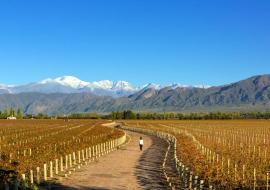WTTC: Tourism’s Contribution to the Caribbean GDP Dropped a Third in 2020

The World Travel & Tourism Council’s annual Economic Impact Report (EIR) reveals the dramatic impact COVID-19 had on the Caribbean’s Travel & Tourism sector, wiping out $33.9 billion from the region’s economy.
The annual EIR from the World Travel & Tourism Council (WTTC), which represents the global Travel & Tourism private sector, shows the sector’s contribution to GDP dropped a staggering 58%, higher than the global average.
Travel & Tourism’s impact on the region’s GDP fell from USD$58.4 billion (14.1%) in 2019, to USD$24.5 billion (6.4%), just 12 months later, in 2020.
The year of damaging travel restrictions which brought much of international travel to a grinding halt, resulted in the loss of 680,000 Travel & Tourism jobs across the popular holiday region, equating to almost a quarter of all jobs in the sector.
These job losses were felt across the entire Travel & Tourism ecosystem, with SMEs, which make up eight out of 10 of all global businesses in the sector, particularly affected.
Furthermore, as one of the world’s most diverse sectors, the impact on women, youth and minorities was significant.
The number of those employed in the Caribbean Travel & Tourism sector fell from nearly 2.76 million in 2019, to 2.08 million in 2020, a drop of almost a quarter (24.7%).
The report also revealed domestic visitor spending declined by 49.6%, with international spend faring even worse, falling by 68%, due to the region’s strong reliance on international travel, with many of the islands massively impacted.
Whilst the global average Travel & Tourism contribution to GDP fell by -49.1%, many of the islands in the region fared much worse.
St Kitts and Nevis saw a steep decline of 72.3%, while St Lucia was close behind with a decline of 71.7%. The Bahamas, UK Virgin Islands and St Vincent and the Grenadine all saw harsh losses, with declines of 68%, 67.6% and 67%, respectively, demonstrating just how important international inbound travel is to the region.














